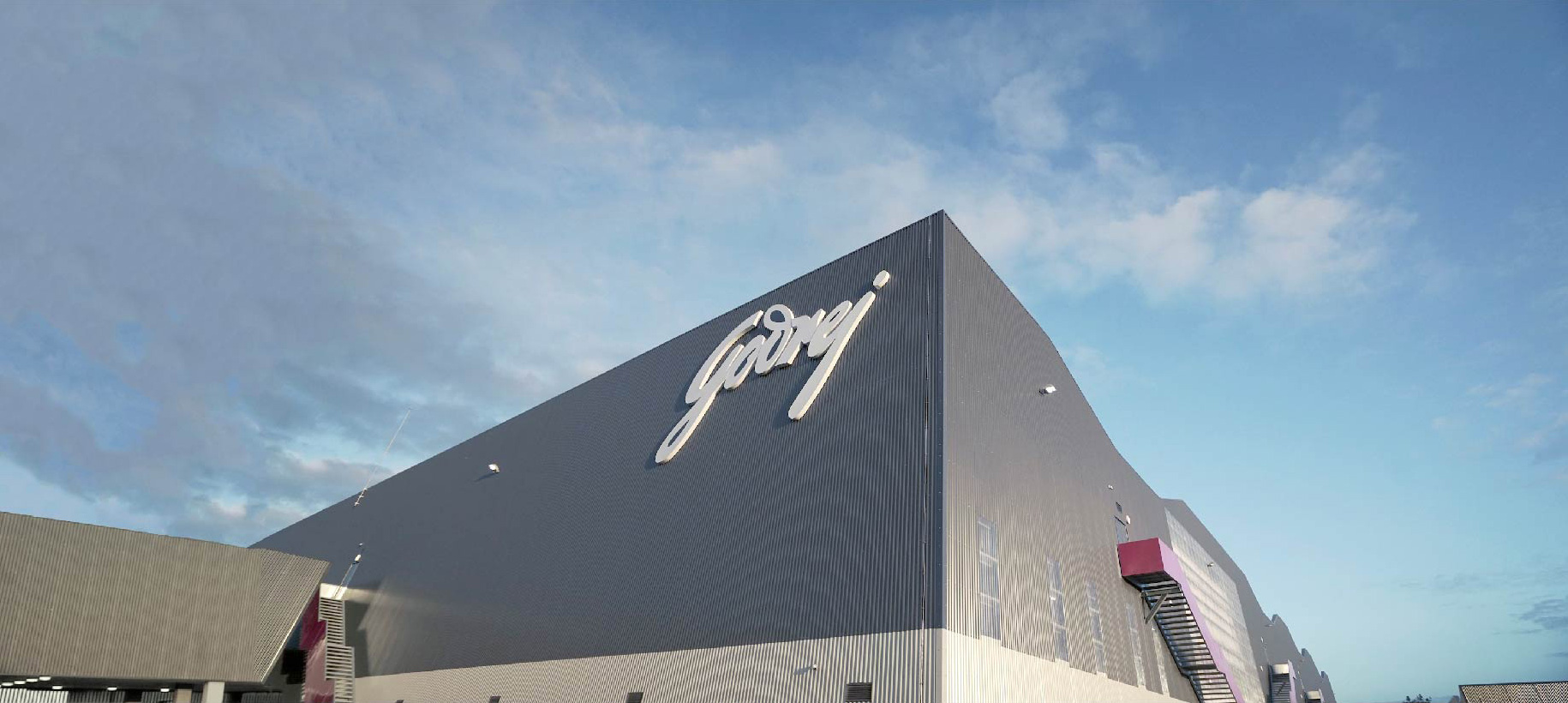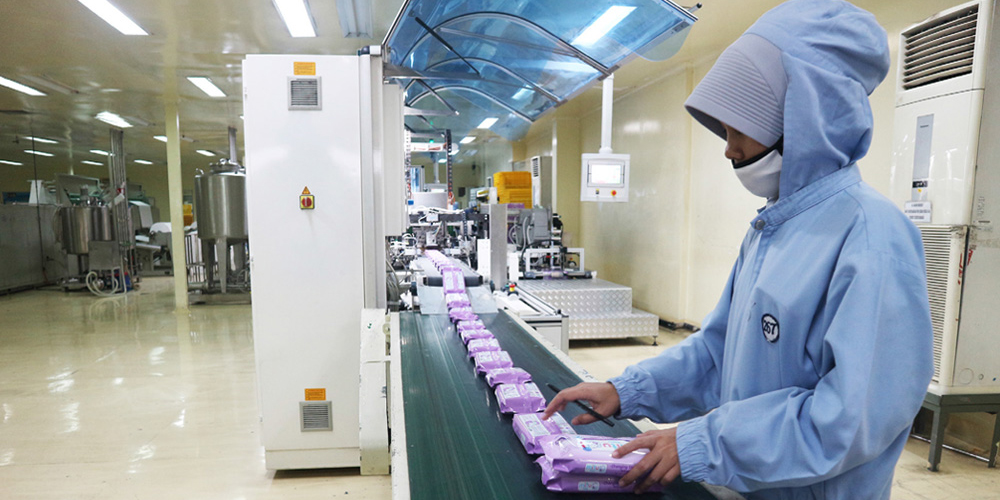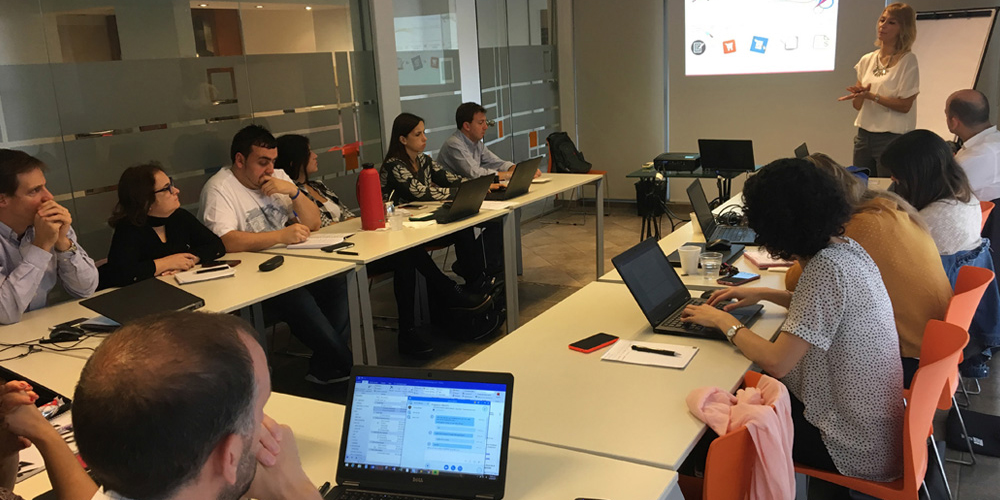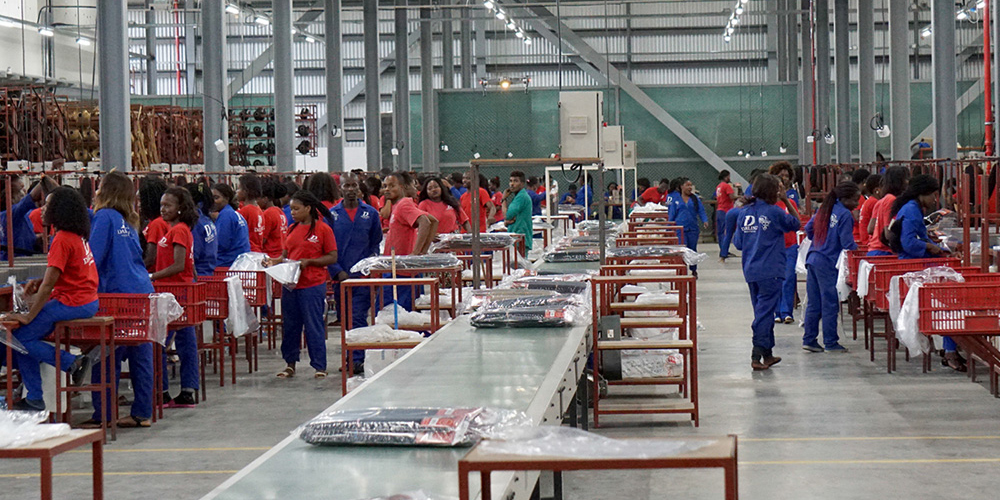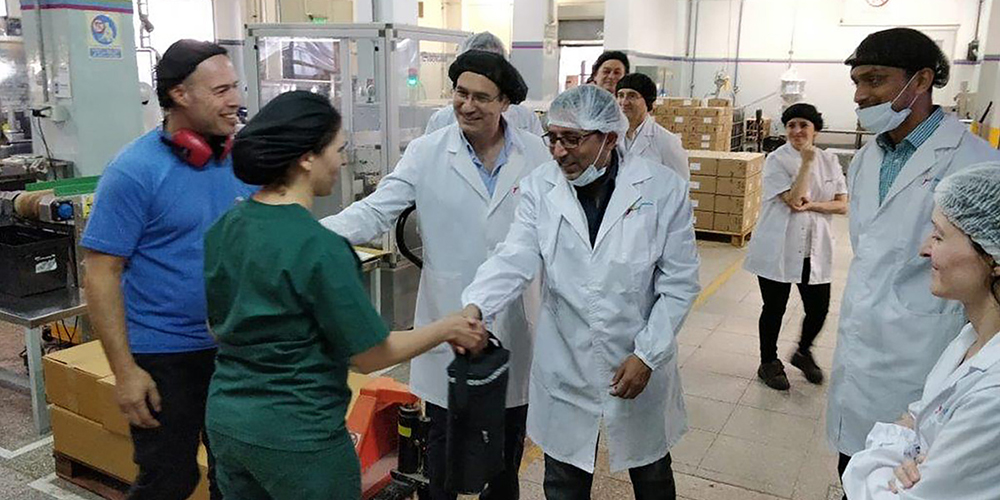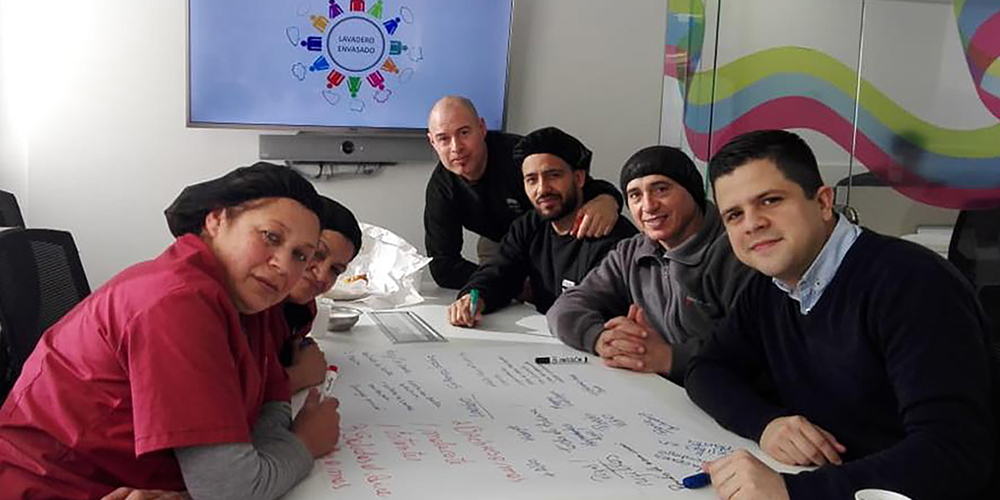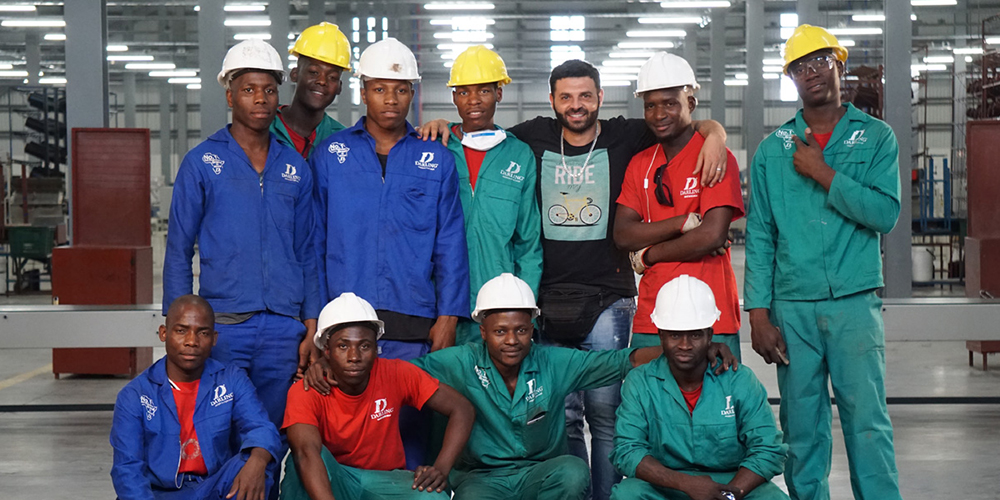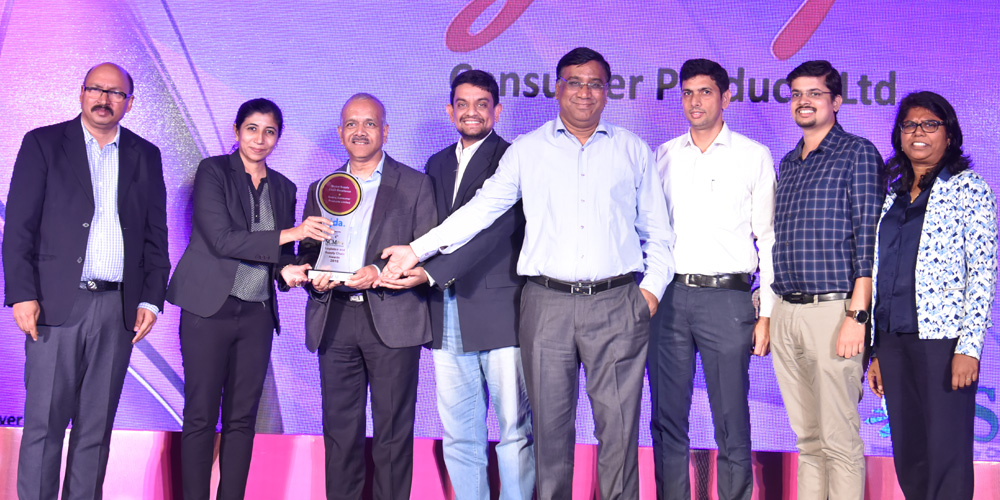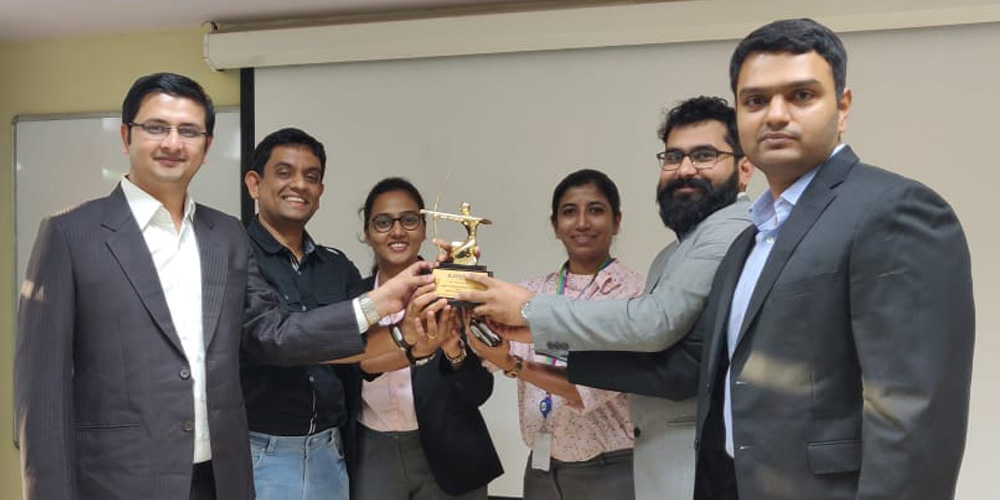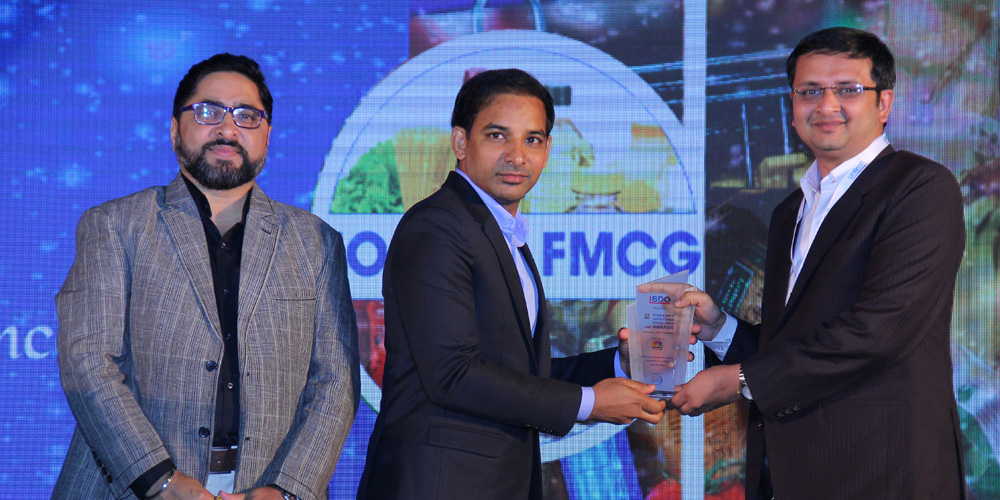INTEGRATED REPORT
MANAGEMENT DISCUSSION & ANALYSIS
Our Strategic Pillars
-
01
Extending leadership in our core categories and geographies - 02
Accelerating innovation and building purposeful brands - 03
Leveraging digital - 04
Enhancing go-to-market - 05
Making our supply chain best-in-class - 06
Fostering an inclusive, agile and high-performance culture - 07
Building a more inclusive and greener world
Our state-of-the-art hair extensions
factory at Mozambique
Strategic Priorities
-
High customer service levels through ready availability of range
-
Freshness of products supplied to consumers
Capitals Impacted
Risks
- Potential disruption of operations due to geo-political risks
- Currency fluctuations resulting in uncertainty over viability of imports
- Local competition
- Labour-intensive product portfolios in some geographies
Enablers
- Demand-driven supply chain
- Shop floor employee engagement
- Localised manufacturing technology
- Engagement with our business partners and suppliers
Key Focus Areas
- Customer service level
- Working capital and inventory
- Gross contribution margin improvement
- Sustainability of the process
Value created
Our future-ready investments are aimed at achieving process efficiencies, leveraging economies of scale and helping us be more competitive in the market, consequently strengthening Financial Capital.
We are enhancing Intellectual Capital by scaling up technology and capabilities and evolving best practices.
Smarter, safer work environments, in line with global standards, enable our team members to deliver more efficiently and improves Human Capital.
The resultant impact of reaching a wider consumer base and enhanced employee capabilities, together with close partnership with our suppliers, builds Social & Relationship Capital.
All our efforts are grounded in improving sustainability and making a positive impact on Natural Capital.
- 0 man days lost due to adverse industrial relations
- Saved over ₹2.80 crore through sustainable manufacturing
- India obsolescence reduced to 0.06%
- Stock availability in India is 98.43%
SUPPLY CHAIN
STRATEGIC
PRIORITIES
- Introducing best practices across geographies to become more agile
- Strengthening supply chain processes in international businesses
- Extending shop floor employee engagement initiatives to international businesses
- Global strategic sourcing with significant benefits to the bottom line
- Sustainable manufacturing and supply chain practices, resulting in significant improvements in energy and water consumption, carbon footprint, waste generation, and renewable energy
- Mapping cutting-edge replenishment practices to the advanced planning and optimisation module
- Responding to constantly changing consumer demand patterns, leading to high fill rates
- Improving ‘freshness’ of products at time of sale, better logistics practices, product traceability, and reduced obsolescence
- Enhancing manufacturing capacity across geographies through fresh investments and de-bottlenecking of capacities
- Piloting the ‘Internet of Things’ in manufacturing and logistics
KEY FOCUS AREAS
CUSTOMER SERVICE
Introducing agile fulfilment initiatives to respond efficiently to changing consumer demands
We continuously focus on making our manufacturing delivery and logistics operations more agile in order to be able to respond to constantly changing consumer demand patterns.
We have achieved high fill rates in most of our key geographies. Fill rates range between 87 per cent and 99 per cent.
In Indonesia and Chile, we are collaborating with retailers to optimise and combine our supply chain planning process to improve on-shelf availability of products and provide better consumer service.
In line with increasing demand patterns, we have enhanced manufacturing capacity across geographies.
Initiatives such as barcoding of shippers in India have helped improve logistics and product traceability. In the last three years, we have reduced obsolescence to 0.06 per cent.
Fill rates across geographies
| Fill Rate | FY19 | FY18 | ||
|---|---|---|---|---|
| India | 98.43% | 97.90% | Indonesia | 99.70% | 98.70% |
| Argentina | 99.00% | 99.00% | Chile | 97.00% | 93.00% |
| Kenya | 96.00% | 96.00% | ||
| South Africa | 94.00% | 90.00% | ||
| Nigeria | 87.00% | 91.00% | ||
| Ghana | 92.00% | 96.00% | ||
| USA | 93.00% | 90.00% |
WORKING CAPITAL & INVENTORY
Extending best practices and shop floor employee engagement globally
To become more competitive, we have adopted best-in-class manufacturing practices across our global supply chain, from procurement through manufacturing and shipping, including demand-driven supply chain, theory of constraints, total productive maintenance (TPM), lean, six sigma, kaizen, and low-cost automation. In fiscal year 2018-19, we extended these best practices to our recently acquired Strength of Nature business in the USA.
We are constantly exploring new technologies and solutions to improve the utilisation of our assets and materials and ensure improved freshness of our products.
1. Total Quality Management
We drive total quality management through shop floor employee engagement initiatives. As part of this, we train all shop floor employees on TPM, lean, quality circles, task force, and kaizen. This year, we extended the programme to include our manufacturing plants in Tanzania and Mozambique.
2. Productivity Improvement
In fiscal year 2018-19, we engaged with over 20,000 shop floor employees to improve the manufacturing process, productivity per person, and employee connections and relations.
Productivity improvement across locations
| Country | Product | Improvement | ||
|---|---|---|---|---|
| India | Liquidator refills | 27% | ||
| India | Hair colour crème sachet | 18% | ||
| Tanzania | Braids | 36.57% | ||
| Kenya | Crochet | 23.07% | ||
| Mozambique | Dreads | 73.55% | ||
| Nigeria | Natural twist | 55% | ||
| Ghana | Weaves | 47.05% | ||
| Indonesia | Aerosol Mega 1 | 4.20% |
All team members are encouraged to suggest changes to improve process efficiency. We ran an employee suggestion scheme and got over 5,140 suggestions, 58 per cent of which were implementable. Thus far, we have implemented 59 per cent of the implementable suggestions, and the remaining are in process.
Our team members also registered 123 kaizens for performance improvement across our Africa and Indonesia manufacturing plants; of these, 118 have been implemented.
GROSS CONTRIBUTION
MARGIN IMPROVEMENT
Making future-ready investments to further improve productivity
We are making future-ready investments in Industry 4.0 technologies and processes to improve productivity and quality.
In fiscal year 2018-19, we implemented Internet of Things (IoT) at our Guwahati and Baddi manufacturing sites. This helped improve line productivity significantly and bring it closer to the rated capacity.
At Guwahati, we have installed computerised visual inspection technology for refill bottle lines. This has helped to reduce defects such as wick chipping, breakage, and half-filled bottles. At Malanpur, we have implemented IoT in the oil unloading section. This provides real-time data on steam consumption and helps optimise the process. Thus far, the process has saved over ₹55 lakh in reduced steam consumption.
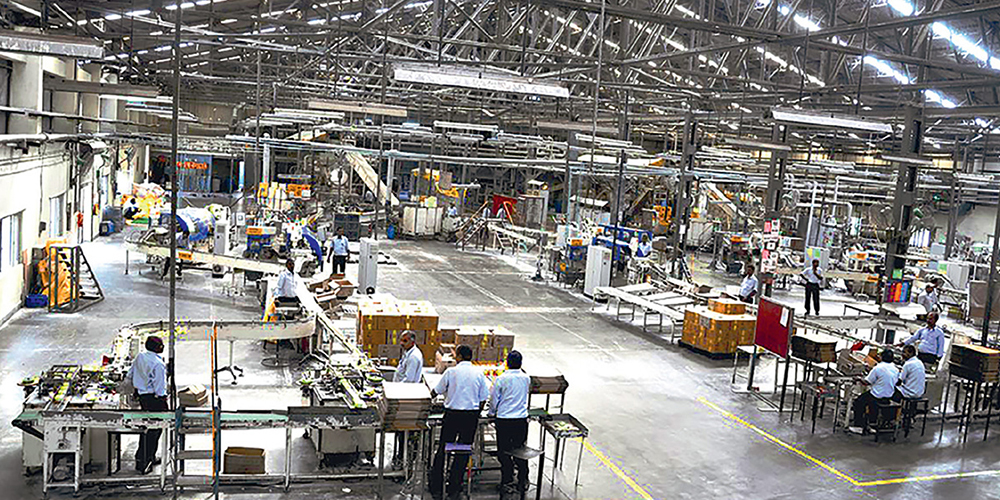
Inside our largest soap manufacturing facility at Malanpur
SUSTAINABILITY OF
THE PROCESS
Driving sustainability initiatives across manufacturing processes and the supply chain
As part of our Good & Green vision, we have identified five environmental sustainability goals to be achieved by fiscal year 2020-21: we aim to be carbon neutral, achieve water positivity, send zero waste to landfill, reduce specific energy consumption by 30 per cent, and have 30 per cent of total energy from renewable sources. Performance is guided and tracked by the sustainability team at the corporate centre and driven by manufacturing cluster heads and team members at each location. We track emissions and data calculations for all locations where we have 100 per cent operational control.
For details on our approach, process and performance, please refer to the Building a more inclusive and greener world > Optimum use of natural resources
As a global consumer business, we depend on multiple suppliers for various raw materials, intermediate goods, and other ancillary inputs. Thus, we need a sustainable supplier engagement approach that can help feed our scaled-up operations and fulfil customer demands while optimising costs.
We have defined our sustainability commitment expectations of suppliers, linked to our Good & Green goals. This is detailed in the GCPL Sustainable Procurement Policy. All our key suppliers are expected to align with this. The current environmental, social, and governance (ESG) parameters are also applicable to our existing suppliers. From fiscal year 2019-20 onwards, we intend to incorporate these parameters as part of the supplier initiation protocol.
We are committed to helping our suppliers make their operations more sustainable:
- We assist in reducing specific energy and specific water consumption, waste to landfill, and specific CO2 emissions
- We encourage them to identify and mitigate ESG concerns
- We help enhance process efficiency, reduce use of hazardous and toxic materials, and responsibly dispose toxic waste, if any
- We recommend the use of renewable sources of energy, wherever possible
AWe work with over 600 suppliers. As part of supplier assessments, we have evaluated 135 suppliers thus far (accounting for 60 per cent of our procurement spends) on being quality centred, ethically driven, green inspired, and socially focused. We collated qualitative and quantitative data and developed a composite score basis for responses. To drive continuous adherence, we have scheduled self declarations from suppliers as well as external audits, identified category-wise targets for them, and shared industry best practices and suggested actions.
We aim to cover suppliers amounting to 70 per cent of our procurement spends by fiscal year 2021-22. Additionally, sustainability assessment through a self declared questionnaire will become part of our new vendor initiation protocol.




